Keeping your patio furniture in pristine condition not only enhances the overall appearance of your outdoor space but also extends the life of the furniture. Dirt, mold, and grime can not only be unsightly, but can also damage furniture materials over time. Deep cleaning is an essential task that ensures that your patio remains a welcoming and comfortable space to relax and entertain. This guide will help you understand when it’s the right time for a thorough clean, what materials you’ll need, and how to approach different types of patio furniture.
Contents
The Right Time For Deep Cleaning
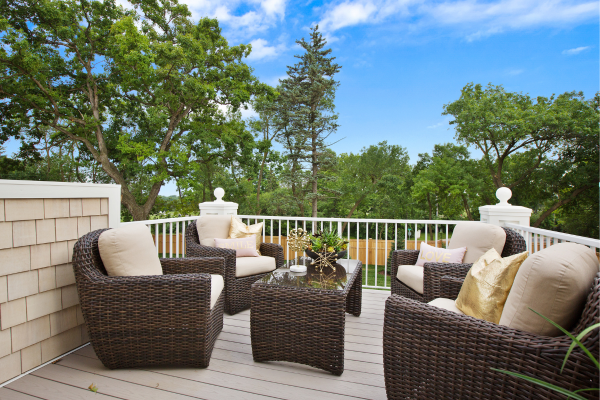
Knowing when to clean your patio furniture is just as crucial as knowing how. Over time, exposure to the elements can cause wear and tear, leading to the buildup of dirt and grime. If your furniture starts to look dull, has visible stains, or shows signs of mold growth, it’s time to give it a thorough cleaning. Furthermore, the end of summer, right before you store your furniture away, can be an ideal time. This ensures that they’re stored in the best condition, preventing long-term damage and making them ready for use when the next season rolls around.
Timing also depends on your region’s climate. In areas with more rainfall or humidity, frequent cleaning might be necessary to prevent mold and mildew. Conversely, in drier regions, dust accumulation might be your primary concern. Observing your furniture and understanding the demands of your local environment will guide you in establishing the best cleaning routine.
Materials Needed For The Cleaning Process
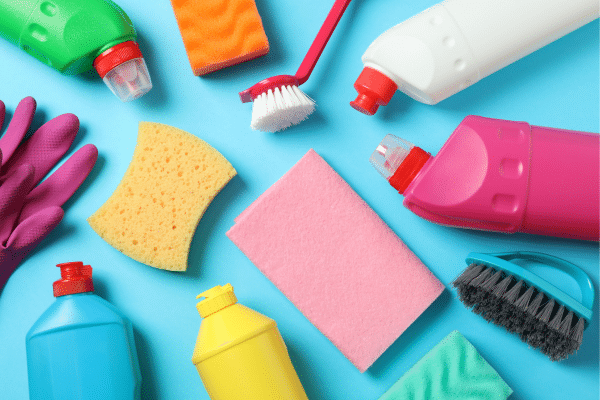
Deep cleaning requires more than just some soap and water. The right materials will ensure a thorough clean without damaging your prized patio pieces. Consider using a mild dish soap as a primary cleaning agent; it’s gentle yet effective at cutting through grease and dirt. For tougher stains or mold, a mixture of vinegar and water can work wonders. Ensure you have a soft scrub brush to help lift stubborn grime. It’s abrasive enough to clean without scratching most surfaces.
Additionally, for those who prefer commercial solutions, there are specialized cleaners available for different furniture materials. However, always read the label to ensure it’s safe for your specific furniture type. Gloves can protect your hands from any chemicals or irritants, while buckets are essential for mixing your cleaning solutions and rinsing. A soft cloth or sponge is also necessary for wiping down surfaces and applying solutions. Remember, the right materials not only make the job easier but also ensure the longevity and beauty of your patio furniture.
Cleaning Fabric And Cushions
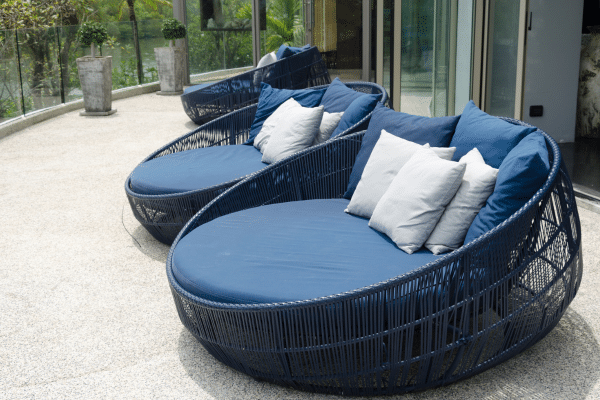
Fabrics and cushions, given their porous nature, often harbor dirt, dust, and sometimes even microorganisms. To start, always dust or vacuum the surface to remove any loose debris. This simple step helps in avoiding unnecessary scratches or abrasions when wet cleaning. For removable covers, a gentle cycle in the washing machine with a mild detergent usually does the trick. But for those that aren’t machine-washable, a mixture of mild soap and warm water, combined with gentle scrubbing, can achieve similar results.
Drying is crucial when it comes to fabrics and cushions. Leaving them damp can invite mold or mildew. If possible, it’s best to let them air dry in a sunny spot, ensuring both sides get adequate sunlight. This method not only dries the fabric but also uses the sun’s natural disinfecting properties to kill any lingering bacteria. If time is a constraint, a cool blow from a hairdryer can be handy, but care should be taken not to overheat or shrink the fabric.
Cleaning Metal And Plastic Furniture
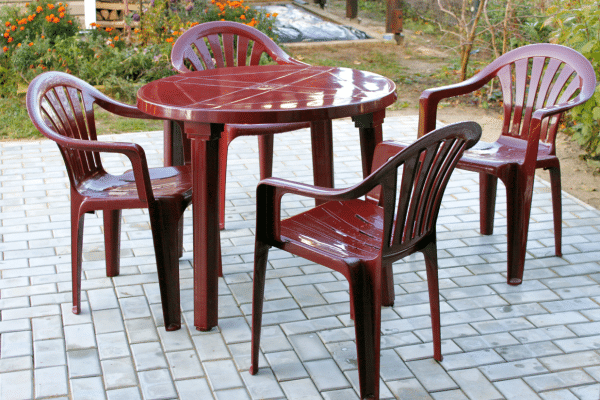
Metal and plastic furniture are durable choices for outdoor settings, but they too demand proper care. For general cleaning, a soft cloth dipped in a solution of mild dish soap and water works well. For plastic furniture, this usually suffices to bring back the shine. However, for metal pieces, especially those prone to rust, more attention may be required. If rust spots are identified, it’s essential to address them promptly. Light rust can be managed with a mixture of baking soda and water, applied with a soft cloth or brush. For heavier rust, specialized rust-removing products might be necessary.
Rinsing thoroughly after cleaning is essential, especially for metal furniture, to prevent any soap residue from corroding the material. Once clean, drying with a soft cloth ensures no water spots are left behind. As an additional step, one might consider applying a thin coat of car wax to metal furniture. It offers an added layer of protection against the elements and imparts a pleasing shine to the metal.
Maintaining Wooden Patio Furniture
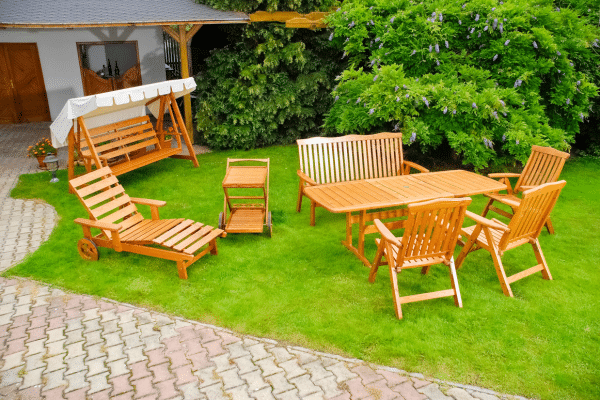
Wood, with its natural and warm appearance, is a favorite choice for many patio settings. However, it demands special care to maintain its beauty over time. Start by brushing off any loose dirt or debris using a soft brush. A mixture of mild soap and water can then be used for cleaning. It’s crucial to follow the wood grain while scrubbing to avoid scratches or unnecessary abrasions.
After cleaning, it’s essential to rinse the furniture thoroughly to remove any soap residue, as this can dull the wood’s finish. Once the furniture is dry, if the wood appears faded or dry, considering applying a suitable wood oil or sealant. Products like teak oil can rejuvenate the wood’s appearance and provide protection from the elements. However, always ensure that the chosen product is appropriate for the type of wood in question. Regular maintenance ensures that wooden patio furniture remains a beautiful and durable addition to any outdoor space for years to come.
Addressing Patio Umbrellas And Accessories
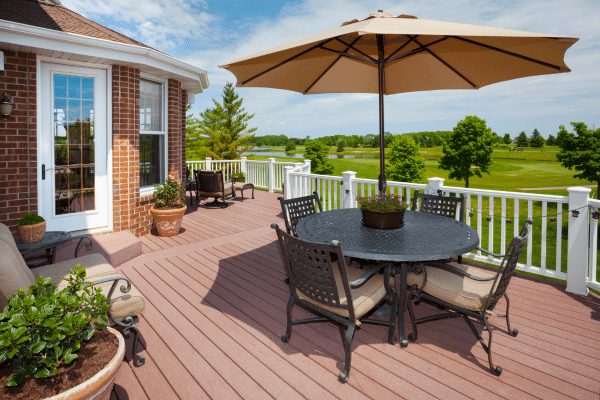
Patio umbrellas, with their expansive fabric canopies, are often exposed to the harshest of elements, from scorching sun rays to heavy rainfall. Begin the cleaning process by opening the umbrella and brushing away any loose dirt or leaves. For the fabric, a solution of mild dish soap and water can be used. Gently scrubbing with a soft brush ensures that any embedded dirt or mildew is removed without causing damage. It’s always advisable to test a small, inconspicuous area first, especially with colored fabrics, to ensure no discoloration occurs.
Accessories such as outdoor rugs or decorative items also need attention. Most rugs can be cleaned with mild soap and water, then thoroughly rinsed and allowed to air dry. For decorative items, the cleaning approach largely depends on their material. Ceramic or glass items can often be wiped clean, while metal or wood accessories might require more specialized care, much like their furniture counterparts.
Post-Cleaning Maintenance Tips

After the hard work of deep cleaning, it’s beneficial to take steps to maintain the freshly cleaned appearance and protect furniture from future wear. One of the best ways to ensure cleanliness is to cover furniture when not in use. This not only prevents dust and dirt accumulation but also protects from unexpected rain showers that can leave water spots. Additionally, placing patio furniture in shaded areas or using patio umbrellas can reduce the damage caused by continuous exposure to UV rays, which can lead to fading and material degradation.
For those living in areas prone to heavy snowfall or rainfall, considering storing furniture indoors or in a garden shed during off-seasons can be beneficial. Regularly checking for signs of wear, tear, or rust allows for timely interventions, ensuring minor issues don’t escalate into bigger problems. With a little effort, patio furniture can look its best and serve its purpose for many seasons.
The Bottom Line
Maintaining the cleanliness and condition of patio furniture is more than just an aesthetic concern—it’s an investment in longevity. The elements can be harsh, but with regular care and the right techniques, outdoor furniture can remain inviting and durable. Deep cleaning, followed by preventative measures, ensures that outdoor spaces are always ready for relaxation or gatherings. Embrace these guidelines, and the rewards will be evident in the form of lasting furniture that continues to enhance outdoor living spaces.



